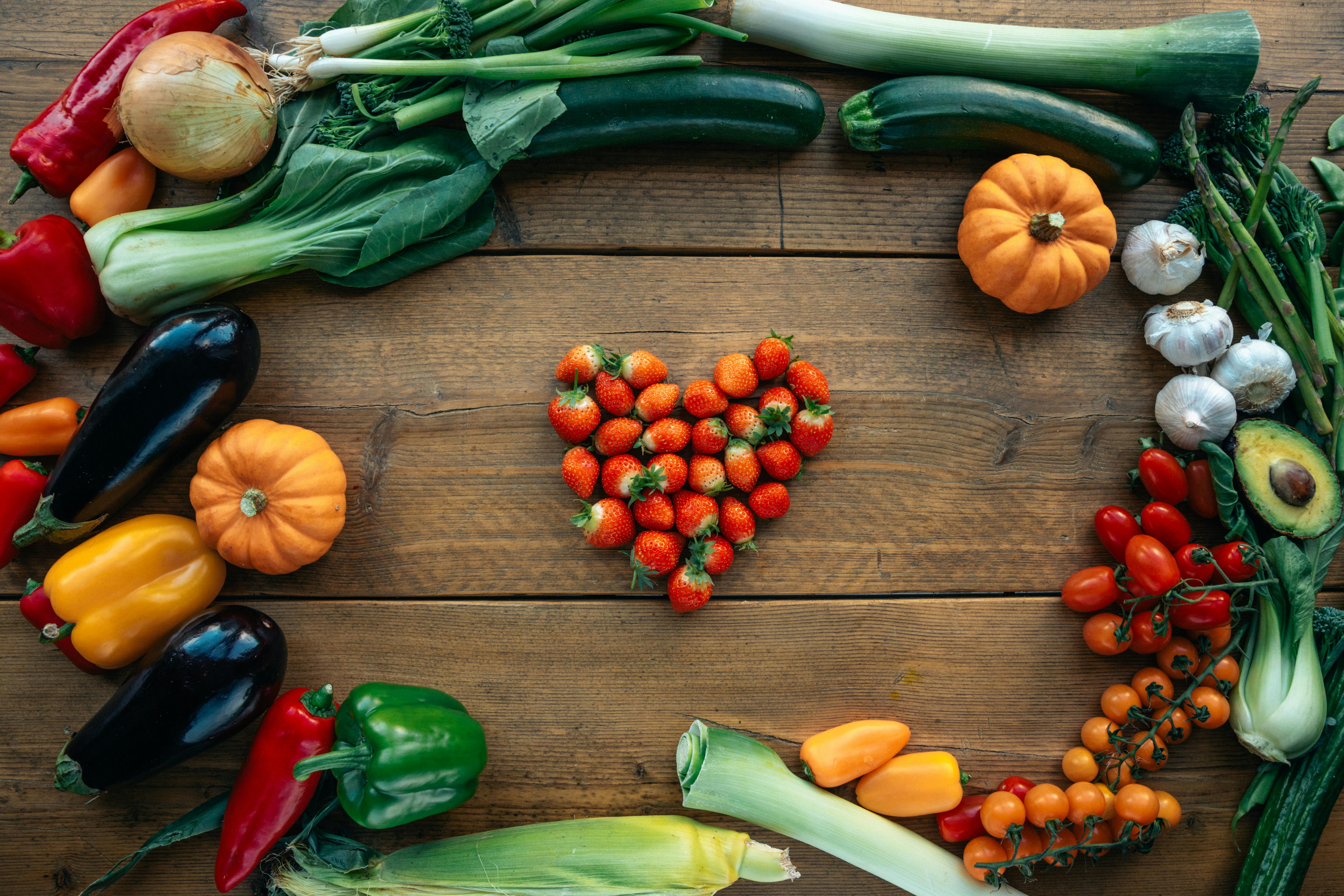
Smart Guide to Diet for Insulin Resistance: Discover Effective Foods for 2025
Managing insulin resistance can be a vital step toward better health, especially as we navigate dietary choices in 2025. An insulin resistance diet is not just about restricting foods but is an opportunity to nourish the body using nutrient-dense options that support insulin sensitivity. This article will delve into effective foods for insulin resistance, focusing on meal plans, portions, and lifestyle modifications to enhance overall wellness.
Understanding the importance of this diet can empower individuals to make informed choices that aid in weight loss, improve blood sugar control, and enhance overall well-being. The article is structured to provide key insights into the types of foods that are beneficial, meal ideas, and expert recommendations to navigate this journey. By adopting these guidelines, you can take proactive steps in managing insulin resistance through dietary choices.
We will explore the best practices for meal preparations, snack ideas that support insulin sensitivity, and effective strategies for managing cravings. Key takeaways include understanding portion control, the role of fiber-rich foods, and incorporating healthy fats in your diet. Let’s begin our exploration into effective dietary habits for managing insulin resistance!
Essential Foods for Insulin Resistance Management
Building on the fundamentals of an insulin resistance diet, identifying key foods is crucial. Incorporating healthy, nutrient-dense options can significantly impact insulin sensitivity and overall health. Let’s explore these essential food categories.
Fruits for Insulin Resistance
Choosing fruits wisely can play a pivotal role in managing insulin resistance. Berries, apples, and pears are excellent options due to their high fiber content and low glycemic index. For instance, berries are rich in antioxidants and have been shown to improve insulin sensitivity. Including a variety of fruits in your diet can help satisfy sweet cravings while providing necessary nutrients.
However, it’s essential to monitor portion sizes, as some fruits can lead to spikes in blood sugar levels if consumed excessively. Ideally, aim for whole fruits rather than fruit juices, which can be high in sugar and low in fiber. Being mindful about fruit selection will aid in controlling insulin levels and improving overall health.
Vegetables for Insulin Resistance
Vegetables should form the cornerstone of your insulin resistance meal plan. Leafy greens, cruciferous vegetables like broccoli and cauliflower, and colored veggies such as peppers and carrots provide vitamins, minerals, and fiber, all crucial for enhancing insulin sensitivity. For example, broccoli contains sulfur compounds that help reduce inflammation and improve the body's response to insulin.
Incorporating a variety of colors on your plate not only makes meals visually appealing but also ensures a wide spectrum of nutrients. Steaming, roasting, or sautéing are healthy cooking methods to preserve nutritional value. By prioritizing non-starchy vegetables, you can effectively control insulin levels while enjoying a diverse diet.
Protein Sources for Insulin Resistance
Adding adequate protein to your meals can help manage hunger and maintain muscle mass, which is essential in insulin resistance management. Lean meats, fish, tofu, legumes, and low-fat dairy are excellent choices. Fatty fish, like salmon, are particularly beneficial as they are rich in omega-3 fatty acids that help reduce inflammation associated with insulin resistance.
Protein-rich breakfasts can stabilize insulin levels throughout the day. Consider options like eggs or Greek yogurt with nuts. Avoiding processed protein sources is essential, as they can contain unhealthy fats and sugars. Building meals around high-quality protein can promote satiety and assist in weight management.
Healthy Fats for Insulin Resistance
Understanding the role of fats is critical in creating an insulin resistance meal plan. Integrating healthy fats, such as avocados, nuts, seeds, and olive oil, can improve insulin sensitivity. Monounsaturated fats found in olive oil have been shown to lower inflammation and support heart health, which is crucial for those managing insulin resistance.
Incorporating these fats in moderation can help balance meals and provide a source of sustainable energy. It’s important to limit saturated and trans fats found in processed foods, which can worsen insulin resistance. Adopting a diet rich in healthy fats will enhance satiety while supporting overall metabolic functions.
Fiber-Rich Foods for Insulin Resistance
Fiber is a crucial component of a diet for insulin resistance. Incorporating whole grains, legumes, vegetables, and fruits can increase your fiber intake, which is beneficial for reducing blood sugar levels and improving digestion. Foods like oats, quinoa, and lentils are particularly high in soluble fiber, which helps to slow down glucose absorption in the bloodstream.
Striving for at least 25-30 grams of fiber per day will promote better insulin sensitivity and assist in weight management. To achieve these goals, consider including fiber-rich snacks like hummus with veggies or fruit with nut butter throughout your day. Tracking fiber intake can yield significant benefits in managing insulin resistance effectively.
Practical Meal Ideas for Insulin Sensitivity
With these foundational foods established, let's transition into practical meal ideas that incorporate the best foods for insulin resistance. Creating a balanced meal plan equipped with these ideas can help streamline dietary changes.
Breakfast Ideas for Insulin Resistance
Starting the day with a balanced breakfast is crucial in managing insulin resistance. Options that combine protein, healthy fats, and fiber create a stable foundation for blood sugar control. For example, overnight oats topped with berries and nuts can provide lasting energy and promote satiety. Alternatively, a vegetable omelet cooked in olive oil pairs well with a slice of whole-grain toast, ensuring a nutritious start.
Another enjoyable choice might be chia seed pudding made with almond milk and seasoned with a touch of vanilla. This dish is rich in omega-3 fatty acids and fiber, both essential for insulin management. Regularly rotating breakfast options can alleviate monotony and enhance adherence to dietary guidelines.
Lunch and Dinner Meal Ideas
For lunch and dinner, focus on incorporating lean protein with a side of vegetables and healthy fats. Grilled chicken breast served with quinoa and steamed broccoli makes for a fulfilling and nutritious meal. Alternatively, a mixed green salad topped with grilled salmon, cherry tomatoes, and a sprinkle of nuts drizzled with balsamic vinegar exemplifies a balanced approach.
Using herbs and spices to flavor meals can enhance enjoyment without added sugars or salt. Meal prepping is beneficial for ensuring you have healthy options available and can save time during busy weeks. Incorporating seasonal produce can also keep meals vibrant and ensure a variety of nutrients.
Snacks that Support Insulin Sensitivity
Healthy snacking plays a pivotal role in managing hunger and maintaining stable blood sugar levels. Opt for snacks that combine protein, healthy fats, and fiber for optimal support. For instance, apple slices with almond butter offer a satisfying crunch while providing essential nutrients.
Veggies with hummus, Greek yogurt with fruit, or a small portion of mixed nuts can also make great snack choices. Avoid processed snacks high in refined sugars and unhealthy fats, as they can contribute to insulin spikes. Having pre-portioned snacks readily available can help curb cravings and promote smarter choices.
Portion Control and Meal Timing
Understanding portion control is vital when adopting a diet for insulin resistance. Using smaller plates, measuring portions, and being conscious of serving sizes can aid in avoiding overeating. Implementing a consistent eating schedule can also help regulate insulin production and improve metabolic health.
Additionally, practicing mindful eating by taking the time to chew food thoroughly and savor flavors can foster a positive relationship with food, ultimately contributing to insulin management. Tracking food intake using apps can provide insightful feedback and help identify patterns that affect insulin levels.
Strategies for Lowering Insulin Resistance
Following the dietary guidelines, let’s delve into multiple strategies for how to lower insulin resistance effectively. Emphasizing comprehensive lifestyle changes can significantly improve outcomes.
The Role of Exercise in Insulin Sensitivity
Incorporating regular physical activity can enhance insulin sensitivity. Engaging in both aerobic exercises, such as walking or cycling, and resistance training, such as weight lifting, offers various benefits that can help lower insulin resistance. Studies show that exercise increases the number of insulin receptors in the body, facilitating better glucose uptake.
Finding enjoyable physical activities fosters adherence and increases the likelihood of long-term success. Aim for at least 150 minutes of moderate-intensity aerobic activity per week, alongside strength-training exercises on two or more days of the week.
Managing Stress for Better Health
Stress can negatively impact insulin levels, making stress management a key component of managing insulin resistance. Engaging in activities such as meditation, yoga, or deep-breathing exercises can promote relaxation and mitigate stress-related insulin spikes.
Additionally, developing a social support network can reduce feelings of isolation and stress. Consider joining community support groups or engaging with family in healthy activities to share experiences and motivate each other.
The Importance of Sleep for Insulin Sensitivity
Sleep plays an integral role in regulating insulin levels. Chronic sleep deprivation can lead to insulin resistance, making it crucial to prioritize quality sleep. Aim for at least 7-9 hours of restful sleep per night, and establish a consistent sleep schedule to help regulate your body's internal clock.
Creating a calming bedtime routine and minimizing screen time before bed can also improve sleep quality. Explore strategies such as reading, gentle stretching, or aromatherapy to enhance relaxation during nighttime routines.
Challenges and Support Systems for Managing Insulin Resistance
Recognizing the potential challenges that may arise is vital in managing your insulin resistance effectively. With appropriate strategies and support systems, overcoming these challenges is achievable.
Understanding Emotional Eating
Emotional eating can derail progress and create challenges in managing insulin resistance. Acknowledging emotional triggers that lead to unhealthy food choices is the first step in addressing this issue. Keeping a food diary can help identify patterns and emotional correlates with food choices.
Consider seeking counseling or psychological support to develop healthier coping strategies. Engaging in other activities such as exercise, hobbies, or social interactions can also distract from emotional cravings and promote healthier behaviors.
Building a Supportive Community for Change
Finding family support or joining a community focused on health can significantly impact success. Sharing goals with loved ones or participating in local support groups dedicated to insulin resistance can foster motivation and accountability.
Regular consultations with dietitians and healthcare professionals can also provide personalized guidance tailored to individual needs. Encouragement from a support system can empower individuals to stay committed to their dietary changes and lifestyle modifications.
Tracking Progress and Making Adjustments
Monitoring blood sugar levels regularly can provide valuable insights into how dietary choices affect insulin resistance. Using meal tracking apps can also help in maintaining awareness of food intake, portion sizes, and nutritional balance.
Evaluating progress, celebrating small victories, and adjusting meal plans based on outcomes can further enhance successful management of insulin resistance. By recognizing and modifying behaviors, individuals can maintain motivation and achieve their health goals more effectively.
Conclusion: The Path Forward in Insulin Resistance Management
By integrating the outlined strategies into daily life, you are on a path toward effectively managing insulin resistance. Emphasizing a diverse diet filled with healthy fats, proteins, and fiber-rich foods ensures that you are providing your body with nutrients it needs to promote insulin sensitivity. Lifestyle adjustments like regular exercise, effective stress management, and consistent sleep hygiene will further enhance your efforts.
As we move into 2025, it’s essential to implement a proactive approach to dietary choices and engage in community support. The journey towards overcoming insulin resistance can be challenging, but with dedication and the right resources, it is possible to achieve improved health outcomes. Start today by creating an insulin resistance management plan tailored to your unique needs and preferences.

For more information on managing insulin resistance and effective dietary strategies, check out this helpful guide. Discover additional tips and insights on maintaining a balanced diet for health improvement through this resource.
